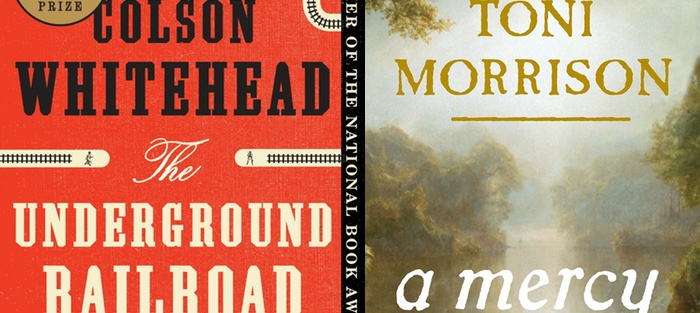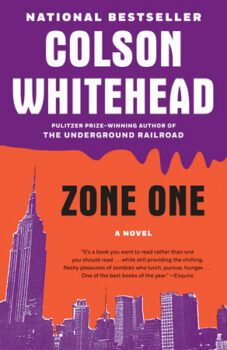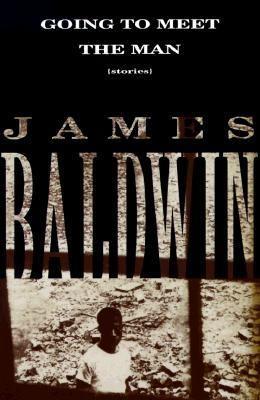A couple of semesters ago I noticed something strange about the fiction I was getting from undergraduates in an advanced class. I had seen it before, but hadn’t thought much about it. This time, I just asked them.
These undergraduates were good students. When I had them write exercises, the results looked like plausible parts of stories. When they had free rein, though—when they got to submit a complete draft of a story of their own devising, with no constraints—not one of the drafts included an entire page without dialogue. Not even close. There were no extended expository passages, no descriptive passages, there was no extended narration. These stories were nothing but scene—in fact, in many cases, they were almost entirely dialogue. Several of them could have passed as radio plays.
“What’s the deal?” I finally asked them. “Every published story we’ve read has narration, often entire paragraphs of narration, and exposition. In your stories, it’s all talk-talk-talk; no one stops to take a breath.”
“That’s just it,” they said. “We don’t want to be boring.”
“Boring?” I said. “We can’t tell if this conversation on page five is taking place in a motel room or a submarine. Would it hurt to slow down long enough to establish the setting?”
They shook their heads, sadly. They had a very disconcerting habit of acting as one.
And that’s when I named the evil they feared: an information dump.
I told this to my graduate students, a particularly accomplished bunch, and they laughed and did a thing with their shoulders that meant: undergraduates.
But as we talked, they confessed that they, too, were wary of extended stretches of backstory, exposition, and narration—anything that smacked of telling. One of them said, “I mean, I don’t want to be all blah, blah, blah.” Most tellingly, they all agreed that it’s imperative to minimize those narrative elements, to make sure they don’t slow down “the story”—which, apparently, needs but doesn’t really include extended thoughts, description, or contextualizing information. They were, without saying as much, defining a story or novel by its actions and events.
One of them said, “I want my stories to start like Mission: Impossible—‘Listen up, people!’”
He might have meant he wants his stories to have a memorable theme song; but I suspect he was referring to an arresting device the creators of that television show conjured up to address a challenge of its premise. The challenge: in each show, information had to be conveyed regarding the nature and people involved in the next “impossible” mission both to the characters—or at least the group’s leader, Mr. Phelps—and to the audience. The device: a manila envelope containing photographs and a self-destructing audiotape. The information could be heard once, and only once; that made the delivery of information dramatic, and it made paying careful attention essential.
Mission: Impossible owes a debt to Arthur Conan Doyle’s Sherlock Holmes stories. In the typical Holmes story, the detective and Dr. Watson are talking or puttering around 221B Baker Street when a visitor—that is to say, an information delivery device—arrives. In the scene that follows, the information provided by the visitor is animated by conversation and, famously, by Holmes’s surprising deductions—from a glance at a woman’s shoe, he knows she once dated a Scottish Anglican with a lisp. While the visitor often reappears in the story, after delivering information—asking for Holmes to accept the mission—she disappears from Baker Street, which is to say both the dame and the game are afoot.
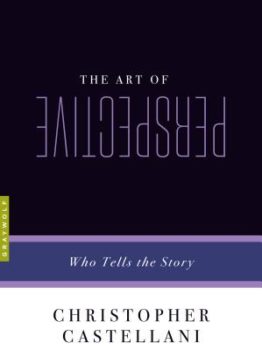 There are some essential differences between a detective story and the stories most of us write that make our job if not more challenging, differently challenging. The most consequential difference is that the information we relay is not necessarily essential to plot; while it can be, the information in our stories and novels might also be related to character or setting or atmosphere, or even to theme or meaning. So one question is how to animate it. Another is how to get the reader not just to read that information more or less patiently, but to actually take interest.
There are some essential differences between a detective story and the stories most of us write that make our job if not more challenging, differently challenging. The most consequential difference is that the information we relay is not necessarily essential to plot; while it can be, the information in our stories and novels might also be related to character or setting or atmosphere, or even to theme or meaning. So one question is how to animate it. Another is how to get the reader not just to read that information more or less patiently, but to actually take interest.
I want to consider both of those questions, but even more than that, I want to consider how the arrangement of information can define a story, can play a crucial role in declaring or determining its nature and intent, or what Christopher Castellani, in The Art of Perspective, refers to as a story or novel’s narrative strategy.
A standard piece of advice for engaging a reader’s attention in a story or novel is to start in scene. This advice is often given to first-time novelists who, concerned about introducing the world of his or her novel and the circumstances of its main characters, began the first draft with a dozen or so pages of turgid exposition. But even if a novel starts in scene, that contextual information has to be provided somewhere, somehow. So it’s not unusual to see a second draft of a novel that begins in scene, followed by a dozen or so pages of turgid exposition. This mistake is perfectly understandable, even if it misses the point of the original advice. “When,” the novelist might ask, “do I explain the hardships of living in nineteenth-century Nebraska? When do I get to tell the reader about my main character’s tragic—well, okay, not tragic, but pretty bad—childhood? And what about her beloved grandfather, the clockmaker?”
But as important as when to do this is how to do it, and why.
Let’s have two novelists show us some options.
Selection, Progression, and the Arc of Tension
or You Need to Know This, and You Need to Know It Now
Colson Whitehead’s The Underground Railroad offers a variation on a (tragically) familiar story: a young slave on a cotton plantation finds conditions so unendurable that she is willing to risk her life to run away. She’s threatened by bounty hunters and by racists of all types; she finds assistance through an underground network of former slaves, free men and women, abolitionists, and other sympathizers. The original twists to the premise include the fact that the underground railroad in the novel is an actual subterranean railway; and the journey of Cora, the main character, is as much a journey through the history of slavery and oppression in this country as it is a geographical journey.
In the novel’s opening chapter, Whitehead wants to establish his main character’s situation, the context of her actions, and the novel’s larger concerns. Like traditional biographies, and like novels of an earlier era, Whitehead’s novel starts with his focal character’s origins—in this case, that means beginning with her grandmother:
Cora’s grandmother had never seen the ocean before that bright afternoon in the port of Ouidah and the water dazzled after her time in the fort’s dungeon. The dungeon stored them until the ships arrived. Dahomeyan raiders kidnapped the men first, then returned to her village the next moon for the women and children, marching them in chains to the sea two by two.
This encapsulated biography of Cora’s grandmother, Ajarry, goes on for five pages, covering nearly her entire life without a single word of dialogue—by my undergraduates’ definition, it is an information dump. So how does Whitehead energize that information, and turn it into an effective opening for his novel?
It helps that the information he wants to convey—Cora’s grandmother’s life story—takes the form of a dramatic narrative: we learn that her mother died when she was young, that her father died on the forced march to the slave ship, and that she was sold many times. Whitehead uses chronology, the biographer’s friend; but within that temporal progression, he organizes the story of her life in three ways: by the times she’s sold, the men she’s married, and the children she’s borne. He initially conveys Ajarry’s story as a series of transactions, telling us who she’s sold by and to and how her price changes. When she finally reaches Georgia, we’re told she “took a husband three times,” and the three husbands are described briefly, in sequence. Then we’re told she bore five children, and a paragraph is devoted to them and their fates, ending with Cora’s mother. Finally we read about Ajarry’s death, and Whitehead summarizes her life in a way that suggests the novel’s interests for the story to come:
Since the night she was kidnapped she had been appraised and reappraised, each day waking upon the pan of a new scale. Know your value and you know your place in the order. To escape the boundary of the plantation was to escape the fundamental principles of your existence: impossible.
Chronology itself—the mere sequence of events that EM Forster called “story”—has limited inherent tension. So while Whitehead uses chronology, he doesn’t rely on that to hold our interest. Instead, he focuses on aspects of Cora’s grandmother’s life that establish the novel’s concerns: her history as a commodity, her married life, her children. (These last two are developed in the novel as the commitment of lovers, and tests of those commitments, and the desire for family, or community.) Each of those is presented in the form of an illustrated list, and in the cases of her husbands and children, Whitehead tells us how many there were, then offers specifics. It’s a little like casting a line and reeling it in. “She took a husband three times,” the narrator tells us, jumping ahead; then he steps back and tells us something notable about each man. It may seem like a small thing, but the emphasis on those lists creates expectation and, when we reach the end of each one, satisfaction. As readers, we understand that the narrator is purposeful, so he gains authority.
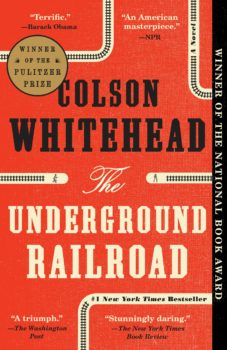 Cora’s grandmother’s life story is told in a way meant to lead us to a conclusion, and to make that conclusion persuasive: in her eyes, based on her experience, escape from slavery is impossible. Our understanding of that sense of futility and its sources are crucial to our appreciation of the novel that follows.
Cora’s grandmother’s life story is told in a way meant to lead us to a conclusion, and to make that conclusion persuasive: in her eyes, based on her experience, escape from slavery is impossible. Our understanding of that sense of futility and its sources are crucial to our appreciation of the novel that follows.
Whitehead does two other things in those first five-and-a-half pages that keep the information he needs to give us from feeling purely expository: he focuses on moments of Ajarry’s life with the intensity and immediacy of scene, and while he maintains an omniscient third-person narration, he simultaneously moves us close to her thoughts, creating an intimacy with the character.
If you’ve read The Great Gatsby and found yourself thinking about one of its remarkable scenes—say, the one where Gatsby shows Daisy all of his beautiful shirts—and you’ve gone back to look at it and realized that the “scene” is really just a paragraph, you’ve recognized the power of scenic narration. An even better example is One Hundred Years of Solitude, a novel full of moments rendered so vividly that we remember them as if they were scenes—but in fact, they’re rarely more than a few sentences. Like scene, this sort of narration focuses on a specific moment with vivid detail, but it’s more concentrated, and often means for the moment to illustrate something larger. There are several examples in the opening chapter of The Underground Railroad. We’re told Ajarry was “sold a few times on the trek [from her village] to the fort”—a summary—but then we get this description of her journey to the boat that will take her from Africa to the United States:
The Nanny was out of Liverpool and had made two previous stops along the Gold Coast. The captain staggered his purchases, rather than find himself with a cargo of singular culture and disposition. Who knew what brand of mutiny his captives might cook up if they shared a common tongue. This was the ship’s final port of call before they crossed the Atlantic. Two yellow-haired sailors rowed Ajarry out to the ship, humming. White skin like bone.
The noxious air of the hold, the gloom of confinement, and the screams of those shackled to her contrived to drive Ajarry to madness.
The narration shifts to the captain’s thoughts, then to a precise moment—Ajarry’s first view of white skin—before accelerating through time again.
Whitehead’s omniscient narrator speaks to us directly, sometimes telling us things Ajarry can’t possibly know, but he also slips into her point of view:
When you are sold that many times, the world is teaching you to pay attention. She learned to quickly adjust to the new plantations, sorting the nigger breakers from the merely cruel, the layabouts from the hardworking, the informers from the secret-keepers. . . . She knew that the white man’s scientists peered beneath things to understand how they worked. The movement of stars across the night, the cooperation of humors in the blood. . . . Ajarry made a science of her own black body and accumulated observations.
In addition to creating the foundation content for the story he means to tell, Whitehead is establishing his method for the novel as a whole. While Cora is the book’s main character, the novel is highly populated, and Whitehead wants to be able to slip into the perspectives of a great many characters, briefly, just as he does here. By starting not with Cora, but with someone who plays a more limited role, he essentially tells us: You’re coming along with me, the narrator—not her. Get used to it.
But focusing on Cora’s grandmother also poses two problems. Beginning the novel with her, making her the initial focus of attention, might suggest that she’ll be important later; and if Whitehead simply began the novel with Ajarry’s story, which ends in five-and-a-half pages, he’d essentially be starting over again in the next chapter. One of the goals of the opening of a story or novel is to create momentum, to establish one or more engines that will drive the narrative forward. It’s a little like pushing a car—once you get it rolling, you don’t want to hit the brakes. Whitehead solves both problems by making Ajarry’s story subordinate to Cora’s. To do that, he employs a strategy that does the work of the self-destructing tape in Mission: Impossible. But he takes the device a step further: he creates an arc of tension that will span the entire chapter.
The first line of the novel is this:
The first time Caesar approached Cora about running north, she said no.
The virtues of that opening line are several: it immediately introduces two characters and a conflict between them; it creates anticipation (we feel certain Caesar approaches Cora a second time, and possibly a third and fourth); and it suggests dramatic urgency—even before we know Caesar and Cora are slaves, the verb “running” suggests escape, or transgression. (Think how much weaker, more passive, that sentence would be if it read, “The first time Caesar asked Cora to go north with him, she said no.” It’s not a horrible sentence, but it stands straight up; it’s a car stuck in idle. Whitehead’s version immediately creates forward movement.)
The second sentence is:
This was her grandmother talking.
That sentence is intentionally jarring, even cryptic; it raises the question, “How so?” Whitehead could provide the answer in a brief sentence; but by refusing to, he creates a minor mystery, and so a second arc of tension. What follows is the five-page biography of Cora’s grandmother. After describing Ajarry’s death, Whitehead ends the chapter by returning to those arcs of tension:
It was her grandmother talking that Sunday evening when Caesar approached Cora about the underground railroad, and she said no.
Three weeks later she said yes.
This time it was her mother talking.
Whitehead reiterates the second sentence of the chapter, and now we understand: Ajarry, the African girl captured and enslaved, survived by believing, “Know your value and you know your place in the order. To escape the boundary of the plantation was to escape the fundamental principles of your existence: impossible.” To some extent, that belief lives on in Cora, influences her.
When Whitehead tells us, “Three weeks later [Cora] said yes,” he has deftly returned us to the present action—the game is afoot. By telling us “This time it was her mother talking,” he prepares us for another chunk of exposition; the attentive reader is prepared to turn the page to chapter two and read a similar biography of
Cora’s mother. But of course, having established that expectation, Whitehead knows better than to satisfy it—not right away, at least. Among other things, Underground Railroad is a novel of suspense, and the suspension of information is one defining element of the novel’s narrative strategy.
Precise Mystery and Deliberate (Dis)Orientation
or You’re Going to Want to Know This
Sometimes we’re so worried the reader might be impatient with information we feel is necessary that we can forget one of our options, which is to make the reader eager for what we have to say. This is the lesson from Tom Sawyer and that fence that needed to be whitewashed: he didn’t want to do it, he knew no one else would want to do it—so he made it seem as if whitewashing a fence was just about the most fascinating thing in the world.
 Toni Morrison’s short novel A Mercy, which predates Underground Railroad, is also about the effects of and responses to slavery in this country; more specifically, it, too, is framed by the story of a young woman who feels betrayed and abandoned by her mother. In Underground Railroad, Cora believes that her mother ran from the plantation where they lived to escape to freedom on her own. In A Mercy, Florens believes her mother coldly offered her to an Anglo-Dutch trader, to repay her master’s debt. At the very end of both novels, we learn that the belief and attendant resentment of both characters was the result of misunderstanding: Cora’s mother was actually returning to her daughter when she was bitten by a deadly snake, and Florens’ mother gave her away because she believed, correctly, that the Dutch trader was a kinder man than her current master, that her daughter would have a chance for a better life if she sent her off. In other words, both mothers made sacrifices, suffering in order to do what they thought would be best for their daughters. The daughters never know this. Whitehead and Morrison both suggest that having partial information not only limits but can dramatically distort our understanding of the past, as well as our understanding of other people, even those closest to us. In these novels, they mean to give their readers access to the larger vision their characters lack.
Toni Morrison’s short novel A Mercy, which predates Underground Railroad, is also about the effects of and responses to slavery in this country; more specifically, it, too, is framed by the story of a young woman who feels betrayed and abandoned by her mother. In Underground Railroad, Cora believes that her mother ran from the plantation where they lived to escape to freedom on her own. In A Mercy, Florens believes her mother coldly offered her to an Anglo-Dutch trader, to repay her master’s debt. At the very end of both novels, we learn that the belief and attendant resentment of both characters was the result of misunderstanding: Cora’s mother was actually returning to her daughter when she was bitten by a deadly snake, and Florens’ mother gave her away because she believed, correctly, that the Dutch trader was a kinder man than her current master, that her daughter would have a chance for a better life if she sent her off. In other words, both mothers made sacrifices, suffering in order to do what they thought would be best for their daughters. The daughters never know this. Whitehead and Morrison both suggest that having partial information not only limits but can dramatically distort our understanding of the past, as well as our understanding of other people, even those closest to us. In these novels, they mean to give their readers access to the larger vision their characters lack.
Despite similarities in theme and content, the books are quite different. While Whitehead’s narrator seems intent on giving us information, on explaining things, Morrison seems intent on withholding information, or restricting it. The novel begins with a deliberately disorienting monologue, one that makes any number of unexplained assumptions.
Don’t be afraid. My telling can’t hurt you in spite of what I have done and I promise to lie quietly in the dark—weeping perhaps or occasionally seeing the blood once more—but I will never again unfold my arms to rise up and bare teeth.
We understand that someone is addressing someone else, and that the speaker assumes the intended audience has certain expectations. “Don’t be afraid” implies that the listener might reasonably feel fear. “My telling can’t hurt you despite what I have done” implies that the speaker has done dangerous, even harmful deeds, deeds we soon learn involved blood and bared teeth. “I promise to lie quietly . . . weeping perhaps” suggests that the listener might have reason to distrust the speaker—thus the promise—and that the speaker feels either remorse or loss. These opening lines create tension and expectation, but the dramatic context is unclear; the emphasis is on mood and emotion.
The bad workshop we all like to talk about—the one that does all the worst things we’ve seen or heard or imagined done in workshops—would be eager to tell Toni Morrison that her opening is confusing, that readers will be frustrated, that the editor who visited last week said your novel needs a clear hook, and while this is dramatic, sure, it’s also kind of a mess, that is to say, unclear. Inevitably, someone in that bad workshop would ask, “Does anyone else want to know, like, who’s talking? To whom? And what she’s talking about?”
Those are precisely the questions Morrison wants the reader to ask.
And she answers them—as gradually, as strategically, as a detective novel yields answers.
The next line of the novel is promising—“I explain”—but our desire for clarity, for complete answers, is still frustrated:
I explain. You can think what I tell you a confession, if you like, but one full of curiosities familiar only in dreams and during those moments when a dog’s profile plays in the steam of a kettle. Or when a corn-husk doll sitting on a shelf is soon splaying in the corner of a room and the wicked of how it got there is plain. Stranger things happen all the time anywhere. You know. I know you know. One question is who is responsible? Another is can you read?
We might find the speaker’s promise to explain reassuring, despite the fact that not much is explained, for the same reason that “I know” and “I know you know” are both mystifying and reassuring: this speaker is aware of her audience, is trying to communicate something urgent. We have faith—or at least, we have reason to hope—that this awareness and desire will ultimately lead to clarity. But before we get to that, we have the puzzle of a dog’s profile in the steam of a kettle and the wickedness of the movement of a doll.
And here we see the author beginning to give us clues not quite despite but through the character who is speaking. The “corn-husk doll” is a concrete detail that begins to suggest time and place. That detail is quickly followed by a perhaps surprising answer to the question “can you read?”
If a pea hen refuses to brood I read it quickly and, sure enough, that night I see a minha mae standing hand in hand with her little boy, my shoes jamming the pocket of her apron. Other signs need more time to understand. Often there are too many signs, or a bright omen louds up too fast. I sort them and try to recall, yet I know I am missing much, like not reading the garden snake crawling up the door saddle to die. Let me start with what I know for certain.
That ends the first paragraph. While much remains uncertain, explanations have begun. Our speaker reads signs. Things like the shape of steam from a kettle, a pea hen failing to brood, and the position of a dead garden snake have meaning for her—which is to say, she is constantly reading and interpreting the world according to a particular set of beliefs that are, most likely, very different from our own. By emphasizing this in the first paragraph of her novel, Morrison is telling us how we will need to read her book. Some things will be clear—after all, we can read. But some signs “need more time to understand. Often there [will be] too many . . . [and we will suspect we are] missing much.” In that way, as patient readers of fiction accustomed to the ways fiction makes sense, we are like the still-unnamed character who is speaking. And so despite all of our uncertainty, we feel a bond, a connection to that speaker.
A few sentences later we learn her name is Florens, and that the year is 1690. This basic information—identification of the character and setting—comes as a relief; but the withholding is key to the novel’s strategy. If the book were to begin by telling us that the year is 1690, some of us would immediately feel a different sort of distance and be conscious of a particular kind of remoteness inherent to historical fiction. We might lean back, metaphorically speaking. As the beginning is written, we might feel a different sort of remoteness, but we’re also offered intimacy: someone is trying to tell us something desperately important. Her urgency and the sense of danger draw us forward, collapsing the centuries between her and us—we lean in, wanting to hear more.
As anyone who has tried it knows, simply withholding information is no guarantee that the reader will continue patiently, or eagerly. Morrison uses the same basic strategy in A Mercy that she uses in other books: she engages the reader through a combination of mystery and clarity. Often she uses concrete details of setting, character, or scene to ground us, then slowly releases contextualizing information. This is yet another reminder that precision is necessary to effective mystery. Morrison’s characters are often on a journey of understanding. Her novels are a journey of understanding for the reader, too, as she carefully controls what we see, and when, and how we perceive it.
A Mercy has a very simple plot: Florens is asked to summon a free African blacksmith her ailing mistress believes can heal her. But while the story of that journey and its result serves as a dramatic framework, Morrison is more interested in revealing and considering the plantation where Florens lives with an unlikely group: the Anglo-Dutch trader; his mail-order wife, who has escaped religious intolerance in England; a native American woman, whose tribe was nearly eradicated by smallpox; a girl born and raised at sea; and two gay men. The novel is largely discursive, drawing us into these characters’ lives and perceptions; and in that way it is largely reliant on information. The challenge for Morrison is to engage the reader, to make us desire what she wants to give us. In this opening chapter, from Florens’ point of view, she relies heavily on the carefully calibrated release of information to create tension and release from sentence to sentence, paragraph to paragraph. (The next section, which is in the third person but closely identified with the Dutch trader, is much more straightforward. Alternating point of view characters is another way she generates interest around information.)
While I’m going to guess Toni Morrison didn’t spend a lot of time with an Xbox controller in her hands, you could compare this narrative strategy to the strategy of many video games: it begins by placing the reader in a very narrowly confined space, without explanation or instruction. In order to understand what’s going on, we need to consider the implications of the few things we can see. The writer’s job, like the video game creator’s, is to find the most effective balance of provocative information and provocative mystery.
EL Doctorow famously said that to write a novel you only need to be able to see what’s just ahead, in the same way that you can drive across the country in the dark, able to see only what’s illuminated by your headlights. A Mercy reminds us how little the reader needs to know at any moment in order to be drawn forward. By the time information is offered, the reader is hungry for it.
Whitehead’s and Morrison’s opening chapters—one offering five pages of backstory, the other creating deliberate uncertainty—represent the range of the spectrum. Both of them illustrate the importance of being strategic in the way we deliver information—and to use it not just to inform, but to enchant and puzzle, to arouse the reader’s expectation, suspense, curiosity, and desire to read on.
Those undergraduates were right, of course: as writers we should be wary of “the information dump.” But that’s not the same as being wary of information. Rather than rush to minimize it, we should embrace the opportunities it affords, make it as dynamic and compelling as possible, and work to understand how our methods can serve the larger goals of the work.

